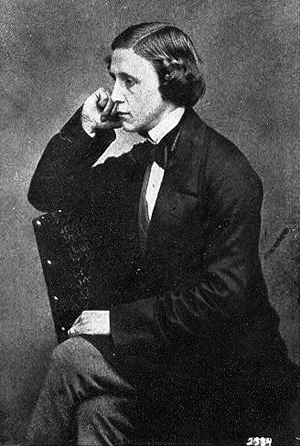
Jack the Ripper occupies a curious place in the popular consciousness – one that seems utterly divorced from the string of vicious murders (at least 5) he is thought to have committed. Perhaps we’ve grown too used to the idea of serial killers now, too exposed to the archetype of an unhinged misogynist, banishing their demons through clinical mutilation and remorseless murder. This psychological explanation seems to disguise the physical reality, rendering the world safer and more predictable again (unless of course you happen to be a prostitute). It’s a scenario we’ve seen played out countless times in film and television, and in reality, most recently in the 2006 Ipswich murders. So it may be that the image of Jack the Ripper has been softened by time, and fresher memories of other serial killers who have followed him, but it still strikes me as odd that Jack has somehow been absorbed into the myth of ‘Jolly Old London’; his story now, apparently suitable as entertainment, for families of tourists and coachloads of schoolkids.
Of course, another major factor in the air of unreality surrounding Jack is the fact that he was never caught, and, worse, a hundred suspects have been put forward in the intervening years (mostly by hacks looking to flog paperbacks). Whilst some are plausible and revealing (though inevitably inconclusive), a good number of these theories are fantasies of the wildest kind, like overblown kites stitched together out of old bits of claptrap, drivel and hooey, some of which have incomprehensibly caught in the winds of crazy and flown for a while. (Sorry, I’m just having a metaphor sort of a day today).
Several are out-and-out lies, relying on demonstrably forged documents or other falsehoods. Others are nothing but stories, and these can be guiltily enjoyable for their sheer chutzpah. In 1923, a Russian named Alexander Pedachenko was identified as the Ripper in the memoirs of William Le Queux. Le Queux claims to have seen a document, written in French by none other than Rasputin, which named Padachenko, an insane doctor, as the culprit, acting on behalf of the Okhrana (the Secret Police) to discredit Scotland Yard. Sadly, certain facts, most notably the lack of any good evidence pointing to Pedachenko ever having existed, count against this one.
My favourite of all is the theory fingering Charles Dodgson, aka Lewis Carroll, as the Ripper, which surely takes the cake as the most preposterous of all. Carroll was first suggested as a possible Jack by Richard Wallace, author of Jack the Ripper, Light-Hearted Friend. The theory seems to be based on the received (and largely exaggerated) image of Carroll as a deeply odd man, who formed dubious, intense relationships with women and girls. The clincher in the argument is Wallace’s use of anagrams, which he believe reveal hidden codes in Carroll’s writing, in which he actually confesses to being Jack the Ripper. He takes a passage from Carroll’s Nursery Alice, which reads,
‘So she wandered away, through the wood, carrying the ugly little thing with her. And a great job it was to keep hold of it, it wriggled about so. But at last she found out that the proper way was to keep tight hold of itself foot and its right ear’.
Innocent enough, you might think. But by simply shifting the letters around (oh, and changing some, and leaving others out), Wallace is able to reveal the shocking true meaning behind the passage.
‘She wriggled about so! But at last Dodgson and Bayne found a way to keep hold of the fat little whore. I got a tight hold of her and slit her throat, left ear to right. It was tough, wet, disgusting, too. So weary of it, they threw up – jack the Ripper.’
Absolute bunkum. As Casebook: Jack the Ripper notes, ‘all Wallace really succeeds in demonstrating is that Dodgson used the same alphabet as everyone else in the western world, and that, therefore his words can be rearranged to make other words – including rather rude ones about ripping ladies open’. Several wags have thankfully laid waste to Wallace’s ‘argument’ by finding other devastating examples of hidden Ripper confessions. This sentence from the beginning of Winnie the Pooh,
‘Here is Edward Bear coming downstairs now’
would be, in the world of Richard Wallace, enough to condemn AA Milne as a psychopath, with its hidden meaning,
‘Stab red red women! CR is downing whores – AA’
And then there’s this extract from Wallace’s own book,
‘This is my story of Jack the Ripper, the man behind Britain’s worst unsolved murders. It is a story that points to the unlikeliest of suspects: a man who wrote children’s stories. That man is Charles Dodgson, better known as Lewis Carroll, author of such beloved books as Alice in Wonderland. ‘
which can quite easily be transmogrified into,
‘The truth is this: I, Richard Wallace, stabbed and killed a muted Nicole Brown in cold blood, severing her throat with my trusty shiv’s strokes. I set up Orenthal James Simpson, who is utterly innocent of this murder. P.S. I also wrote Shakespeare‘s sonnets, and a lot of Francis Bacon‘s works too. ‘.
Case closed, I think you’ll agree.
But despite the lunacy of many Ripper theories, it is still interesting to examine why such accusations might attach themselves to certain people. And, in the case of Prince Albert Victor (or ‘Eddy’), Queen Victoria’s grandson, why should three such theories weave around him?
For that story, read Part 2.

